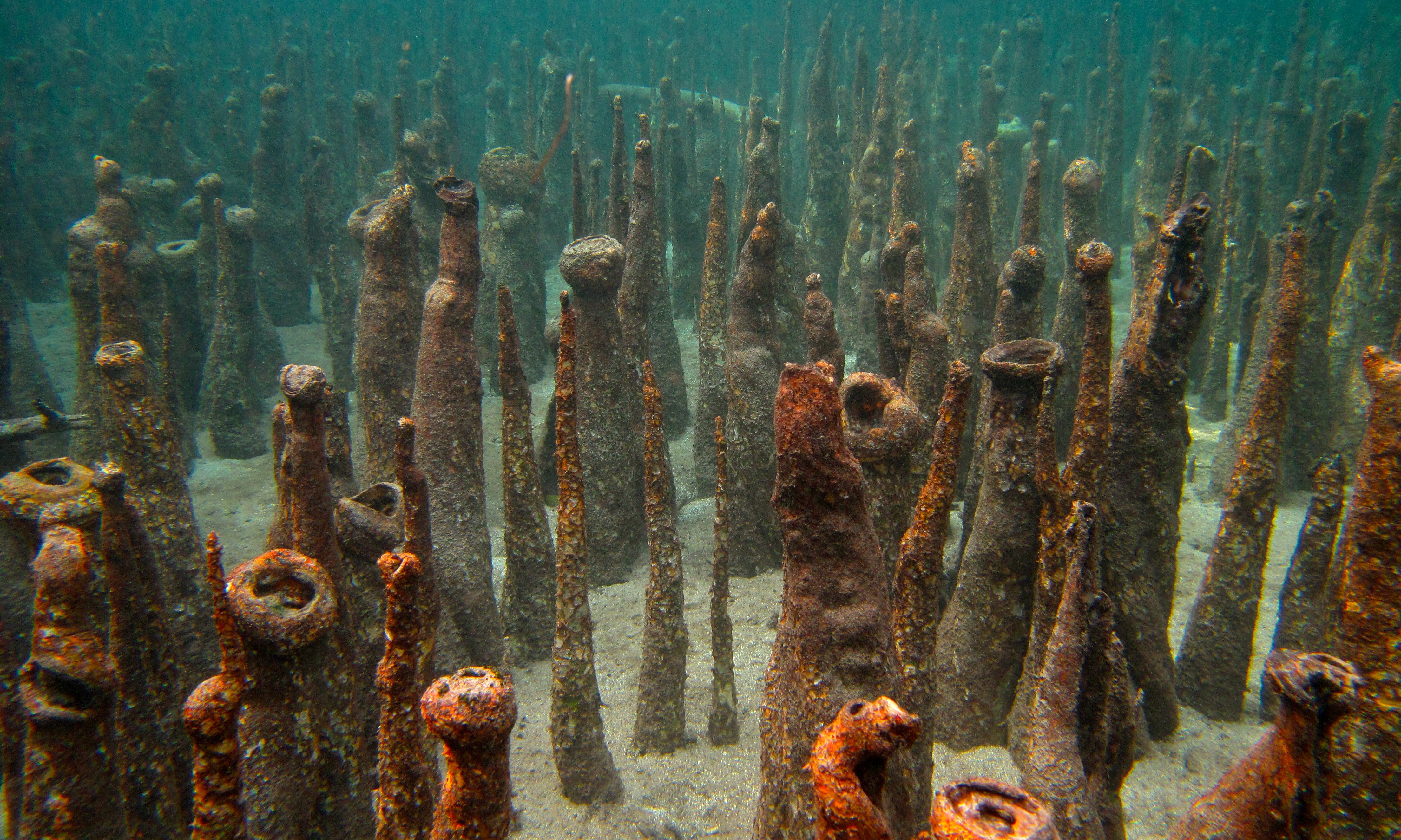
We often think of dry land as the domain of plants, which inhabit nearly every terrestrial part of the globe, including habitats as diverse as tropical rainforests, northern tundra and scorching deserts. Less well known, however, are the plants that colonised the ocean sometime after the evolution of land plants 450 million years ago. Unlike freshwater habitats, which provide hospitable conditions for plants to thrive, seawater presents unique challenges—producing some fascinating adaptations. Let’s take a look at 7 of the strangest plants found in Earth’s oceans.
7. Surf Grass

Surf grass (Phyllospadix spp.) is an unusual perennial plant, native to the tide pools of North America’s west coast. Surf grass is unusual among marine plants in that it produces true flowers, which can be pollinated both underwater and at the water’s surface when they are exposed by the tide.
6. Mangroves

Mangroves comprise a group of about 100 species of small trees that occur along oceanic coastlines in tropical and subtropical regions of the world. These plants have evolved to thrive in areas inundated with saltwater, using adaptations such as pneumatophores—specialised ‘breathing roots’ that protrude from the water like snorkels and supply oxygen to the structural roots in the anaerobic sand below. Mangroves have a critical role in shielding inland areas from tropical storms and tsunamis, and provide an important habitat for a multitude of coastal species.
5. Coccolithophores

Coccolithophores are single-celled marine plants, which are a type of phytoplankton. These tiny organisms cover themselves with as many as 30 calcium carbonate scales known as coccoliths. When coccolithophores die, the coccoliths remain, sinking to the seabed where they contribute to the formation of limestone and chalk, eventually producing geologic features like the famous White Cliffs of Dover.
4. Neptune Grass

Neptune grass (Posidonia oceanica) is a type of seagrass found in the Mediterranean Sea. Scientist believe this species is one of the slowest growing and longest living plants on Earth, with individuals living thousands of years as they gradually spread across the seafloor. Neptune grass is also known for producing large floating seeds that look like olives, and for forming nearly spherical balls of dead leaves, which often wash ashore on Mediterranean beaches.
3. Halimeda

Technically not a true plant, Halimeda spp. is an unusual type of green macroalgae that is often found growing amongst corals in reef habitats. Halimeda deposits calcium carbonate into its tissues, forming a stony skeleton that protects it from hungry herbivores. When Halimeda dies, it leaves behind the white calcium carbonate skeleton, which eventually crumbles and contributes to the formation of white sand beaches.
2. Lettuce Sea Slug

As its name suggests, the lettuce sea slug (Elysia crispata) is not a plant at all, but rather a remarkable type of gastropod mollusc. During the course of its life, the lettuce sea slug transitions from a typical heterotrophic animal to an autotrophic creature that obtains its nutrition much like a plant. It accomplishes this feat through a process known as ‘kleptoplasty’ in which an adult slug sucks the chloroplasts out of recently ingested macroalgae, and deposits them into the many frilly folds on its back. These chloroplasts then produce nutrition for the slug in the same way they would for algae or true plants, allowing it to survive on solar power.
1. Pyrodinium

Unlike other types of bioluminescent dinoflagellates, which survive by consuming other organisms, Pyrodinium bahamense contains chloroplasts and uses the power of the sun to produce its nutrition. This species of phytoplankton is most common in the Caribbean Sea, though it can be found in tropical waters around the globe. P. bahamense is best known for its ability to produce blue light when disturbed, as well as its potential to create highly toxic red tides and bio-accumulating neurotoxins during rare blooms—making its blue glow both a wonder and a warning.
[geoip-content not_country=”CA”]
ON THE APP
 Underwater: Bahamas
Underwater: Bahamas
Nature Scenes are an immersive, HD, Slow TV viewing experience—unencumbered by words—showing our world at its most beautiful. One hour of uninterrupted reefs and marine wildlife in the Bahamas.
Want to watch Underwater: Bahamas for free right now? Subscribe to the Love Nature streaming app and start your 30-day free trial of the best on-demand natural history documentaries out there. [/geoip-content]

 Underwater: Bahamas
Underwater: Bahamas